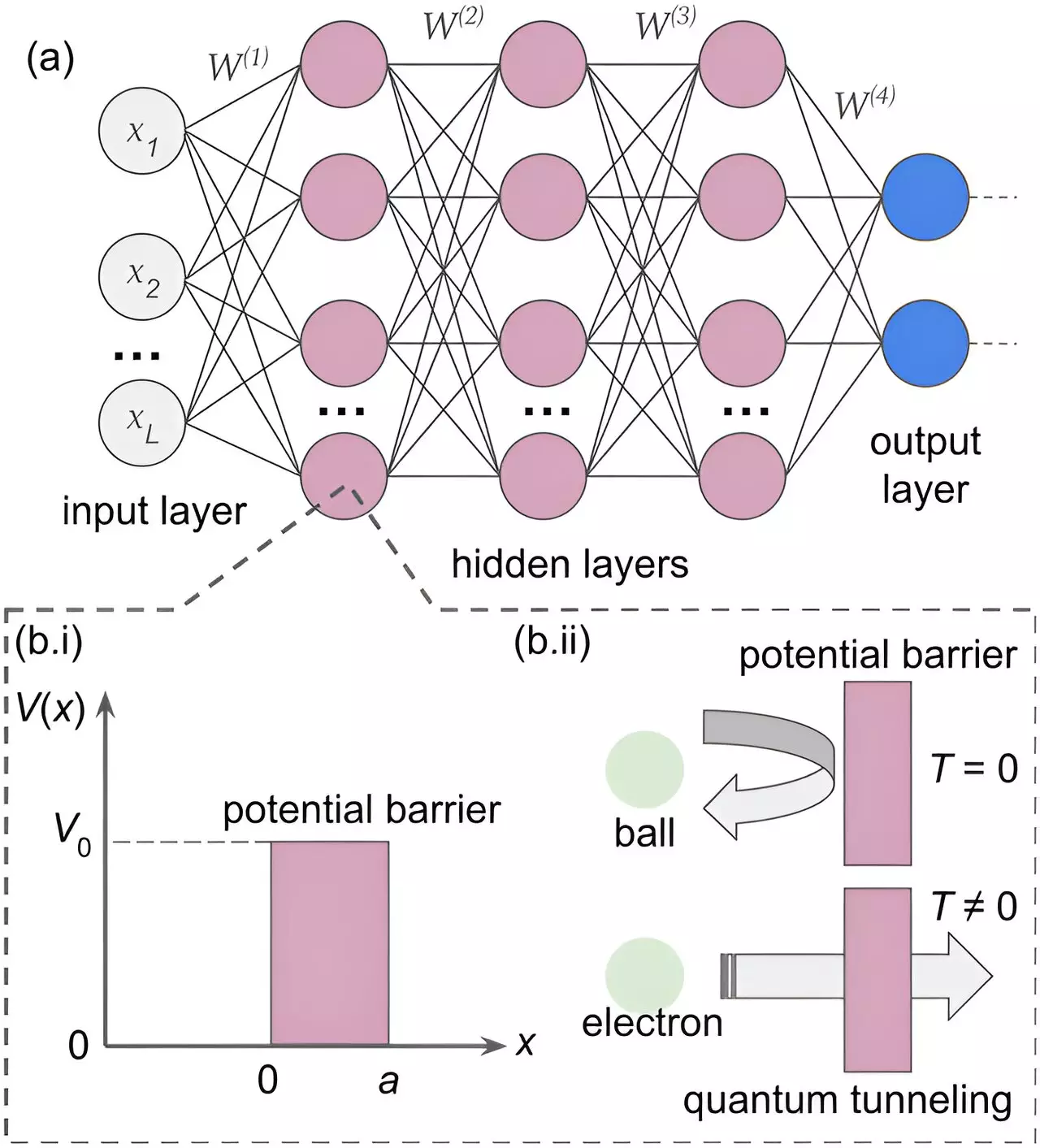Optical illusions have long fascinated researchers due to their ability to trick the human brain into perceiving things that may or may not be real. By studying optical illusions, scientists hope to gain insights into how our brains function and how they sometimes fail, such as in cases of dementia or during prolonged space flights.
Researchers using artificial intelligence (AI) to simulate human vision have encountered difficulties when it comes to understanding and interpreting optical illusions. While computer vision systems can recognize complex objects like art paintings, they often struggle with optical illusions. The latest models have shown some promise in recognizing certain types of illusions, but further investigation is needed.
In a groundbreaking new study published in APL Machine Learning, a neural network was designed using quantum tunneling to simulate human perception of optical illusions. Quantum tunneling, a phenomenon from quantum physics, allows tiny particles to pass through barriers that would be considered impenetrable in classical physics. By incorporating quantum tunneling into the neural network, researchers were able to create a model that could effectively “see” optical illusions.
The use of quantum tunneling in neural networks stems from the idea that traditional neural networks mimic the function of the brain, with layers of artificial neurons storing and classifying data. In quantum tunneling, neurons can bypass barriers and reach activation points, even when they appear to be blocked. This unique feature of quantum tunneling allows for more complex and nuanced processing of information within the neural network.
Research into quantum mechanics has shown that it may offer valuable insights into human behavior and decision-making. While the exact role of quantum effects in the brain is still debated, the principles of quantum mechanics can be useful in modeling human thinking. Quantum computational algorithms have demonstrated greater efficiency compared to classical algorithms, prompting researchers to investigate how quantum effects can enhance neural networks.
The integration of quantum effects into neural networks opens up new possibilities for enhancing the capabilities of artificial intelligence systems. By better understanding how our brains process illusions and construct reality, researchers hope to develop AI algorithms that can navigate complex and ambiguous information more effectively. In the long term, quantum-powered AI may even pave the way for the development of conscious robots that can mimic human cognition.
As we delve deeper into the realms of optical illusions, quantum mechanics, and neural networks, we unlock a world of possibilities for enhancing artificial intelligence and gaining a deeper understanding of human cognition. By embracing the principles of quantum physics and harnessing the power of neural networks, researchers are paving the way for groundbreaking advancements in AI and robotic technology. The intersection of these seemingly disparate fields holds the key to unlocking the full potential of artificial intelligence and reshaping the future of technology.


Leave a Reply